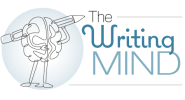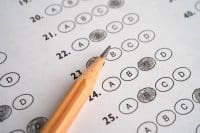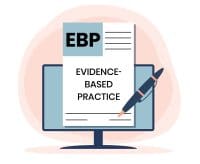Many journals ask authors to submit keywords (single words or phrases) as part of manuscript submission. At this stage, you’ve been working with your article a long time and can see the end in sight (at least until you receive peer review comments), so it’s tempting to dash off a few words and hit submit.
Don’t.
Instead, take time to thoughtfully choose keywords. Your investment will pay off in making it more likely your target readers will find your published work.
Value of keywords
Your published article will be indexed in various databases and on websites that are searchable. Examples of databases include MEDLINE, EBSCO, and CINAHL, although many nurses now use search engines such as Google and Google Scholar to find information online. Search engines use complex algorithms to analyze parameters such as title, abstract, and keywords so users receive the most helpful results — search engine optimization (SEO). In essence, keywords improve SEO for your article.
Choosing keywords
Here are a few considerations for choosing keywords. Remember to keep the focus on the main topics of your article.
Check the author guidelines. These will tell you the number of keywords (typically three to eight) you can submit. The guidelines also may specify that the keywords need to be drawn from Medical Subject Headings (MeSH). For example, Nursing Research requires three to five keywords, using MeSH terms when possible.
Understand MeSH terms. The National Library of Medicine uses MeSH terms (arranged alphabetically and hierarchically) to index articles in MEDLINE. This vocabulary helps organize information, so users obtain search results that most closely match what they’re looking for. Choosing keywords that are MeSH terms will improve the likelihood of your article being seen by someone searching for information on your topic.
You can use the MeSH on Demand tool to help you identify relevant MeSH terms for your article. Simply enter your text (the abstract works well) and review the results. The results aren’t foolproof, so you should review the terms to ensure they’re appropriate keywords for your article. However, it’s a good place to start.
Find a balance. You don’t want to have too many single words, which can result in too many results for those searching for information. On the other hand, too many multi-word terms can make it more difficult for users to find your article.
Review your title and abstract. Some sources recommend choosing keywords that also are in the title, but many others recommend against this. The thought is that it’s better to use keywords that will complement the main topic. For example, a keyword for an article titled “Nursing care of older patients receiving prolonged mechanical ventilation” might be the MeSH heading of “geriatrics.” It also can be helpful to include some of the keywords in the abstract.
Google it. Try searching in Google and Google Scholar, using the concepts in your article. In addition to checking the results, review the related searches to see what words and phrases appear most frequently.
Test your words. Take your keywords for a test run on a search engine. Review the results to verify that they align with the main topics of your article.
Improving dissemination
You wrote your article to convey information to others, so naturally you want as much of your target audience as possible to read it. You can’t guarantee people will read what you wrote, but you can help guarantee they’ll find it by taking time to select effective keywords.


I’ve been a full-time professional nurse writer and editor for many years, and that doesn’t count the writing I did as I fulfilled my nursing roles in clinical, research, education, and management. My passion is helping nurses share their expertise through the written word, including, but not limited to, publication. Writing can be scary and intimidating. I hope to make it less so and to help you develop your writing skills the same way you’ve developed your nursing skills.
Whether you’re considering your first or your 50th publication, want to contribute to your organization’s newsletter, or crave to be a better communicator online and in print, I hope you’ll find what I write helpful. The nurse publishing colleagues I’ve learned from over the years (many of whom are contributors to my book) may not be listed by name, but I’m grateful for their willingness to share. In that spirit, I’m looking forward to sharing with you! If you have feedback, feel free to email me at csaver57@gmail.com.
References
National Library of Medicine. Welcome to medical subject headings. 2022. nlm.nih.gov/mesh/meshhome.html
Nicoll L . Finding and documenting sources. In: Saver C. Anatomy of Writing for Publication for Nurses. 4thed. Indianapolis, IN: Sigma Theta Tau International; 2021;49-65.



















